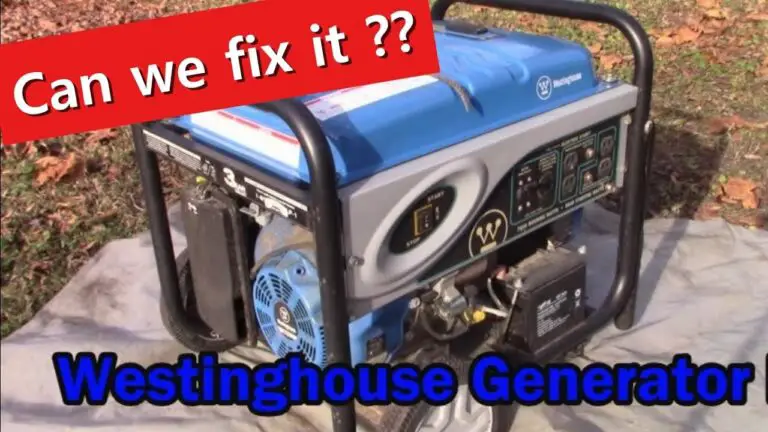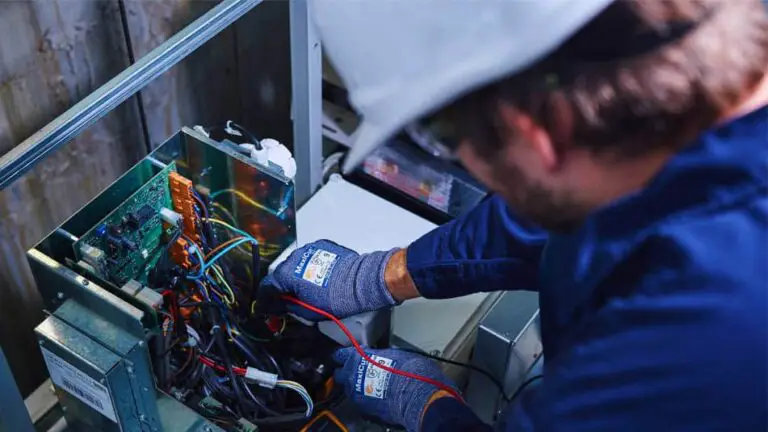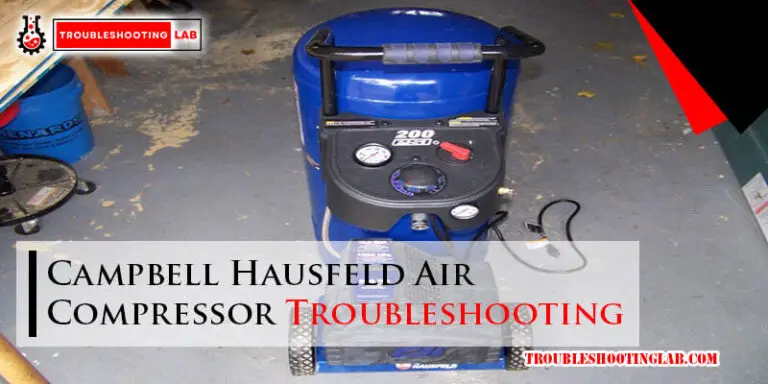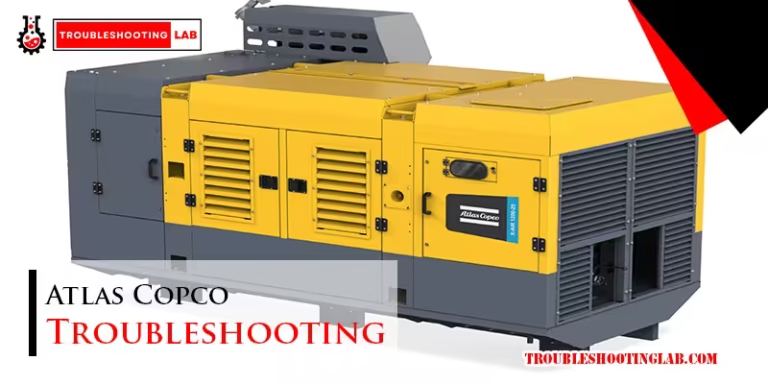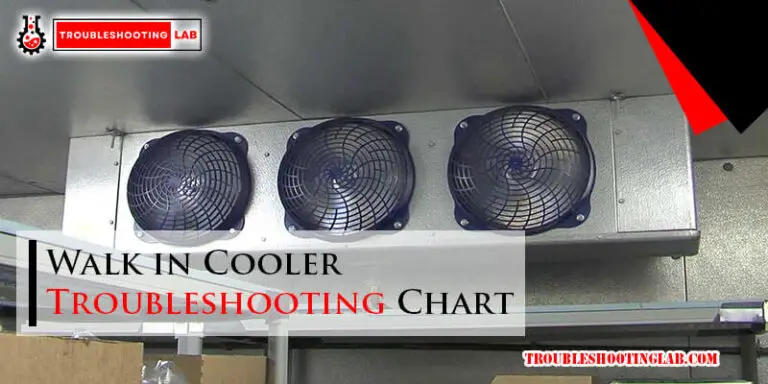Ryobi Generator Troubleshooting: Quick Fixes and Tips
Is your Ryobi generator giving you trouble just when you need it most? Don’t worry—you’re not alone.
Whether it’s a sudden loss of power, strange noises, or issues starting it up, these hiccups can feel frustrating and overwhelming. But here’s the good news: most Ryobi generator problems have simple fixes you can handle yourself. In this guide, we’ll walk you through easy troubleshooting steps to get your generator back up and running.
By the end, you’ll not only feel confident diagnosing the issue but also save time and money by avoiding unnecessary repairs. Ready to get your generator working like it should? Let’s dive in.

Credit: www.youtube.com
Common Startup Issues
Ryobi generators are reliable tools for powering your essential devices. Still, they can sometimes face startup issues. Understanding these problems can save time and frustration. Below, we outline common startup issues and how to address them.
Generator Won’t Start
A generator that won’t start is a frequent problem. Check the fuel tank first. Old or stale fuel can prevent the engine from starting. Drain and refill the tank with fresh gasoline if needed.
Inspect the spark plug for dirt or damage. A worn-out spark plug can stop the generator from working. Replace it with a new one if necessary. Also, ensure the choke is in the correct position. Incorrect settings can hinder the engine from starting.
Low Oil Shutdown Problems
Low oil levels can trigger the generator’s automatic shutdown feature. This safety mechanism prevents engine damage. Start by checking the oil level. Add more oil if it is below the recommended level.
Sometimes, the oil sensor may malfunction. Clean or replace the sensor if the problem persists. Using the correct oil type is also important. Refer to your generator’s manual for specifications.
Battery-related Issues
Generators with electric start often rely on a battery. A dead or weak battery can stop the generator from starting. Test the battery with a voltmeter to check its charge. If it is low, recharge or replace the battery.
Corroded battery terminals can also cause issues. Clean the terminals to ensure a proper connection. Always secure the battery connections tightly to avoid power disruptions.
Power Output Problems
Ryobi generators are reliable, but even the best machines can run into issues. Power output problems are among the most common headaches users face. Whether your generator isn’t producing power at all or the voltage is unstable, understanding the root cause can save you time and frustration.
Generator Producing No Power
Picture this: your generator is running, but your appliances stay lifeless. This issue often stems from a tripped circuit breaker or worn-out brushes. Check the circuit breaker first—it’s a quick fix if it’s been flipped off.
If the breaker looks fine, inspect the brushes and commutator. Worn brushes can block power transfer. Replacing them is simple, and Ryobi provides clear instructions in their manual.
Another possibility is residual magnetism loss. You can restore it using a drill or another small tool to “flash” the generator. Have you tried that yet?
Fluctuating Voltage
Voltage swings can damage sensitive electronics. If your Ryobi generator’s voltage is inconsistent, it may be due to a dirty carburetor or faulty AVR (Automatic Voltage Regulator). Start with the carburetor—clean it thoroughly using a carburetor cleaner.
If cleaning doesn’t work, turn your attention to the AVR. A malfunctioning AVR can cause instability in voltage output. Replacing it might be necessary, and luckily, Ryobi generators often have easy-to-access parts.
Is your generator placed on uneven ground? Vibrations can also contribute to fluctuating voltage. Try moving it to a flat, stable surface.
Overload Protection Activation
Ryobi generators come with built-in overload protection to prevent damage. If the overload light is blinking, your generator may be working too hard. Are you running multiple high-wattage appliances? Check your total wattage—exceeding the generator’s limit will trigger protection mode.
Disconnect some devices and reset the generator. If the overload persists, it might indicate an electrical fault inside the generator. In this case, consulting a professional is your best option.
Don’t ignore regular maintenance. Dust and debris can clog filters, causing the generator to overheat and trip the overload protection. How often do you clean your unit?
Fixing power output problems doesn’t have to be overwhelming. With a systematic approach, most issues can be resolved quickly. Have you tackled similar generator challenges before? Share your tips below!
Fuel System Troubles
Ryobi generators are known for their reliability, but even the best machines can experience issues. One of the most common culprits when your generator won’t start or runs poorly is the fuel system. From blockages to stale fuel, small issues in the fuel system can bring your generator to a halt. Let’s break down the most likely trouble areas and how you can fix them.
Clogged Carburetor
The carburetor is the heart of your generator’s fuel system. If it’s clogged, your generator might struggle to start or run unevenly. This often happens when fuel residue builds up over time.
To fix this, start by turning off the fuel valve and draining the carburetor bowl. Use a carburetor cleaner to spray the inside thoroughly. Reassemble it and test your generator. If the issue persists, the jets may need a deeper cleaning or replacement. Have you cleaned your carburetor recently?
Prevent future clogs by always shutting off the fuel valve when storing the generator. This simple habit can save you hours of troubleshooting down the line.
Stale Or Contaminated Fuel
Fuel doesn’t last forever. If it’s been sitting in your generator for months, it may have gone stale or absorbed moisture. This can stop your generator in its tracks.
Drain the old fuel completely from the tank and carburetor. Refill it with fresh, high-quality fuel. Adding a fuel stabilizer can help extend the life of your fuel, especially if you don’t use your generator often.
Next time, try to use up any leftover fuel before storing the generator. Have you ever left fuel in your generator for too long? If so, this could be your problem.
Fuel Line Blockages
A blocked fuel line can choke off the supply of fuel to your generator. Dirt, debris, or even a kink in the line can cause this issue.
Inspect the fuel line for any visible damage or obstructions. If you see dirt, disconnect the line and blow compressed air through it to clear the blockage. Replace the line if it’s cracked or damaged.
Check the fuel filter as well. A clogged filter can mimic the symptoms of a blocked fuel line. Keep a spare filter handy to avoid downtime. How often do you inspect your fuel lines?
Addressing these fuel system troubles can get your Ryobi generator back in action. With a little maintenance and care, you can avoid these issues altogether and keep your generator running smoothly for years to come.

Credit: www.facebook.com
Electrical Component Failures
Ryobi generators are reliable, but electrical component failures can disrupt performance. Identifying these issues quickly ensures your generator stays functional. This section highlights common electrical problems and their fixes. Focus on these components to troubleshoot effectively.
Faulty Spark Plug
A spark plug ignites the fuel-air mixture in the engine. A worn-out or dirty spark plug can prevent the generator from starting. Check for visible damage, carbon deposits, or cracks. Clean the spark plug with a wire brush if it’s dirty. Replace it if it shows excessive wear or damage. Always use the correct spark plug specified in the manual.
Damaged Circuit Breaker
The circuit breaker protects the generator from electrical overloads. A damaged breaker can prevent power from flowing to connected devices. Inspect the breaker for visible cracks or burn marks. Reset the breaker if it trips. If it still doesn’t work, replace it with a compatible one. Avoid overloading the generator to prevent future damage.
Loose Wiring Connections
Loose wires can disrupt the electrical flow and cause malfunctions. Inspect all wiring connections for looseness or corrosion. Tighten any loose connections using the appropriate tools. Replace corroded wires to ensure proper conductivity. Always turn off the generator before handling electrical components to avoid injury.
Overheating And Noise Issues
Ryobi generators are reliable, but overheating and noise issues can occur. These problems can disrupt performance and lead to frustration. Understanding the causes and solutions for these issues ensures your generator operates smoothly.
Overheating During Operation
Overheating often happens due to extended use or insufficient airflow. A clogged air filter restricts airflow, causing the engine to overheat. Check the air filter regularly and clean or replace it if dirty. Ensure the generator is placed in a well-ventilated area, away from walls or objects blocking airflow.
Low oil levels can also lead to overheating. Inspect the oil level before starting the generator. Add high-quality oil recommended by Ryobi if the level is low. Avoid running the generator continuously for hours. Allow it to cool down after extended use.
Unusual Noises Or Vibrations
Unusual noises or vibrations often indicate loose components. Inspect screws, bolts, and other fasteners for any looseness. Tighten them securely to reduce noise and vibrations. Damaged parts, such as the muffler or fan, can also cause unusual sounds. Replace faulty components promptly.
Use the generator on a stable, flat surface. Uneven placement increases vibrations and noise. Ensure the surface is free of debris to prevent damage or imbalance.
Exhaust System Blockages
A blocked exhaust system can lead to overheating and louder operation. Carbon buildup in the muffler restricts exhaust flow. Periodically clean the muffler and exhaust ports to remove buildup. Avoid using fuel with high ethanol content, as it increases carbon deposits.
Inspect the exhaust system for physical damage. Cracks or dents can disrupt airflow and increase noise. Replace damaged parts to maintain optimal performance. Keep the exhaust area clear of obstructions to ensure proper airflow.
Maintenance Tips
Regular maintenance can keep your Ryobi generator running like a champ for years. It’s not just about fixing problems when they arise—it’s about preventing them in the first place. With a few simple steps, you can avoid costly repairs and keep your generator ready for action whenever you need it.
Regular Oil Changes
Changing the oil in your Ryobi generator is one of the easiest ways to extend its life. Old oil can thicken and lose its ability to lubricate the engine properly. This can lead to overheating and damage.
Check the oil level every time you use the generator, especially if it’s been running for long hours. Ryobi recommends changing the oil after the first 20 hours of use, then every 50 hours or every season, whichever comes first. Use the oil grade specified in your manual—don’t guess.
Have you ever gone too long without an oil change in your car and noticed how rough it ran? Your generator is no different. Keep it smooth and efficient with fresh oil.
Cleaning Air Filters
The air filter is your generator’s first line of defense against dust and debris. A clogged filter makes the engine work harder, reducing performance and fuel efficiency. Worse, it can let dirt into the engine and cause serious damage.
Inspect the air filter every 25 hours of use or sooner if you’re operating the generator in dusty conditions. If it’s dirty, wash it with soapy water, let it dry completely, and reinstall it. If it’s torn or heavily soiled, replace it.
Think about it—would you run a marathon breathing through a dirty mask? Your generator deserves to breathe freely too. Take a couple of minutes to clean the filter, and you’ll notice the difference in performance.
Inspecting For Wear And Tear
Generators vibrate during operation, and over time, this can loosen bolts, wear down components, or even cause cracks. Regularly inspect your Ryobi generator for any signs of wear and tear.
Pay attention to the spark plug, fuel lines, and electrical connections. If you notice frayed wires, leaks, or worn-out parts, address them immediately. Tighten loose bolts and screws to avoid parts falling off during use.
Have you ever ignored a small issue with your generator only to have it fail when you needed it most? Don’t let that happen again. A quick inspection can save you from a major headache later.
Are you giving your Ryobi generator the care it deserves? These simple maintenance tips can make all the difference in performance and reliability. Start today—it’s easier than you think!
When To Seek Professional Help
Sometimes, DIY troubleshooting isn’t enough to fix your Ryobi generator. While it’s tempting to keep tinkering, certain problems demand the expertise of a professional. Knowing when to stop and call for help can save you time, money, and possibly your generator.
Persistent Issues After Troubleshooting
Have you already tried resetting, cleaning, and checking your Ryobi generator, but the problem keeps coming back? This could point to a deeper issue. For example, if your generator keeps shutting down despite a full tank of fuel and clean air filters, the problem might lie in the engine or wiring.
At this point, forcing more DIY fixes might worsen the problem. Professionals can quickly pinpoint the root cause, saving you from unnecessary headaches. Ask yourself: is your time and frustration worth the risk of making things worse?
Internal Component Damage
If you suspect internal damage, stop right away. Trying to fix issues like a cracked carburetor, burnt wiring, or a damaged alternator without proper tools can be dangerous. You might even void your warranty.
For example, strange noises or a burning smell could signal internal damage. These situations require specialized knowledge that only a trained technician can provide. Don’t let curiosity tempt you into disassembling the generator—it’s not worth the risk.
Warranty And Service Options
Did you know that attempting certain repairs can void your Ryobi warranty? Always check your warranty terms before making any major fixes. Many Ryobi generators come with service plans that cover professional repairs.
Take advantage of this! If your generator is still under warranty, reach out to Ryobi’s service center. They’ll ensure your generator is fixed properly, without extra costs. Why pay out of pocket when you might already be covered?
Knowing when to call for help can make all the difference. The next time your Ryobi generator acts up, step back and assess whether professional assistance is the smarter option. What’s your experience with troubleshooting? Share your thoughts below!

Credit: www.repairclinic.com
Conclusion
Troubleshooting your Ryobi generator doesn’t have to be overwhelming. Start by checking basic issues like fuel levels and connections. Regular maintenance can prevent many common problems. Always follow the manufacturer’s guidelines for safe use and care. If problems persist, consult a professional to avoid further damage.
Taking small steps can keep your generator running smoothly for years. A little attention now saves big repairs later. Reliable performance begins with proper troubleshooting and upkeep. Stay proactive, and your generator will be ready when you need it most.

